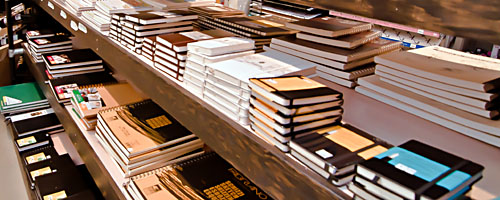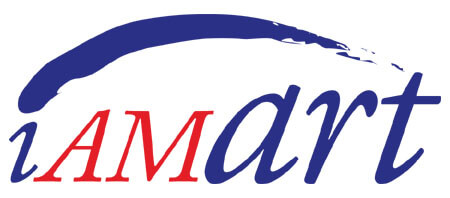choosing a sketchbook - part 1
paper surface and weight

For artists, sketchbooks are essential. They provide an easy place to record ideas, make studies, and experiment with new techniques. Sometimes sketchbooks themselves are treated as finished pieces of art. Typically, however, sketchbooks are personal journals or archives that artists can refer back to in order to remind themselves of ideas or keep a record of their progress. Since sketchbooks need to stand the test of time, they need to be sturdy, conveniently sized and suitable to the type of media that an artist uses.
The next few posts will address some of the many variables to consider when choosing a sketchbook, including paper surface, paper weight, quality of paper, sketchbook size, and type of binding.
Sketchbook paper comes in a wide variety of surfaces and weights, each suited to a different range of media:
Surfaces are described as having more or less “tooth,” or roughness in texture. The more toothy the paper, the rougher its surface. **Rougher surfaces **are generally found more in thicker papers. Thick, toothy surfaces hold on to more of the drawing or painting medium and are better for high contrast and lower detail works. Toothier papers are well suited to charcoal, crayon and pastels, ink washes and watercolor, or any work that utilizes the texture of the paper for aesthetic effect. Smoother surfaces take up less media and are better suited to more detailed work. Very lightweight papers like tissue paper, and lightweight sketch paper are usually smooth, but thicker papers like bristol and some painting paper are also smooth. Smoother surfaces are ideal for graphite pencil, colored pencil, and ink pens. Smoother papers are also more likely to be bleedproof, meaning that ink or color washes won’t spread and “feather” across the surface.
Weights (relating to thickness) of paper are standardized and defined by the International Organization for Standardization and are often listed in grams per square meter (gsm), or in pounds, the standard of measurement more familiar to most artists in the U.S. Following are some of the most common weights of paper found in sketchbooks and drawing pads. (all measurements are approximate):
- 25 lb_ (approx 40 gsm)_: tracing paper
- 30-35 lb (approx 45-50 gsm): newsprint
- 50-60 lb (approx 75-90 gsm): sketching or practice paper – thick enough to work on with pencils, charcoal, or pastels, but usually too thin for ink or most markers, which may bleed through.
- 70-80 lb_ (approx 100-130 gsm)_: drawing paper suitable for finished artwork in most media. Paper any lighter than 70lb will usually be thin enough to see through to drawings or materials underneath.
- 90-110 lb (approx 180-260 gsm): heavy-weight drawing paper, bristol, multi-media papers. Weight in this range is similar to card stock or light poster board.
- Heavier papers, up to 140 lb (approx 300 gsm) or more, are most often used for painting rather than drawing. When found in sketchbooks, they are usually rougher papers intended as watercolor journals or to remove for painting on individual sheets.
